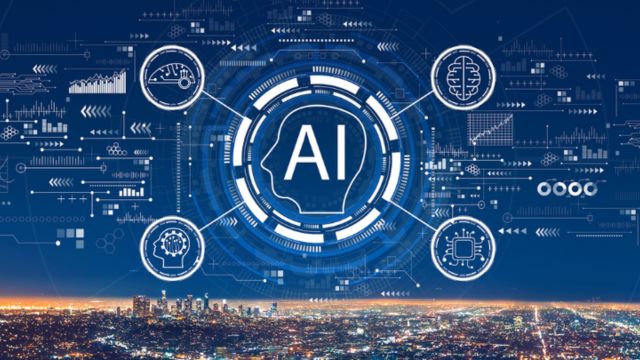The aviation and border security sectors are not behind in a time when digital revolution is changing sectors all around. Facial recognition is among the most significant technical development improving security mechanisms. Known for its speed, precision, and efficiency, this technology is progressively forming the backbone of security policies at borders and airports all around. The development of facial recognition technology and its function in enhancing digital security at important tourism destinations will be discussed in this paper.
The Rise of Facial Recognition Technology
Though it has existed for decades, facial recognition technology has just lately become somewhat popular in security uses. Unlike conventional means of identification like passports or hand-held checks, facial recognition employs biometric data to identify people by means of face feature analysis. Providing both speed and precision, this technology verifies identity by matching the acquired image with a pre-stored database.
Rising desire for flawless, frictionless experiences at security checkpoints combined with the necessity for improved security protocols have made face recognition a preferred alternative for aviation and border authorities. Especially airports have embraced this technology to improve the passenger experience and simplify security protocols.
How Facial Recognition Works in Airports and Border Security

Using a camera system positioned at critical locations—such as at passport control, security checks, or boarding gates—a high-resolution image of a person’s face is captured, therefore enabling facial recognition. The system then generates a unique biometric template from face feature data like the distance between the eyes, nose shape, and jawline contour.
This template is matched with the passenger or individual database, which might contain past pictures or information from official government-issued identity. Should a match arise, the system can either provide access or highlight possible problems for more investigation.
Key Benefits of Facial Recognition in Digital Security
- Speed and Efficiency: One of the most significant advantages of facial recognition is its ability to process information quickly. Traditional passport checks, where travelers wait in line to have their documents manually verified, can be time-consuming. With facial recognition, passengers can clear security or border checks in a matter of seconds, reducing congestion and long queues. This is especially critical during peak travel times.
- Enhanced Accuracy: Facial recognition systems are known for their high level of precision. Unlike human security officers, who may occasionally overlook inconsistencies or make errors due to fatigue, machines can continuously operate with consistent accuracy. This reliability ensures that the identification process is both secure and trustworthy.
- Contactless Security: In the wake of the COVID-19 pandemic, the demand for contactless security systems has risen. Travelers are looking for ways to move through security checkpoints without physical contact with others. Facial recognition enables this, as it only requires passengers to look into a camera, reducing the risk of contamination and ensuring the safety of both travelers and security personnel.
- Reduced Human Error: Human error is a common issue in manual security checks. Facial recognition eliminates the possibility of such errors, providing a more reliable and consistent method for identifying individuals. This leads to greater overall security and fewer incidents of unauthorized access or mistaken identity.
- Real-Time Alerts: Facial recognition systems can also generate real-time alerts when they detect individuals on a watchlist or flagged for further inspection. This immediate response time helps security staff to quickly assess potential threats or identify individuals of interest before they can proceed through checkpoints.
Enhancing Border Control with Facial Recognition
Particularly helpful at international crossings, where controlling a lot of visitors might be difficult is facial recognition. Governments and border control organisations can increase immigration processing efficiency by using this technology at border admission and exit locations.
For instance, facial recognition can help to instantly confirm the identity of visitors, therefore validating that persons entering a nation are exactly the same people who sought for travel permission or visas. It can also assist in identifying those trying to enter under false names or with phoney paperwork.
Furthermore, facial recognition improves security since it lets border control authorities monitor people who overstay their visas or come under false identity. Automated methods allow authorities to quickly identify disparities, hence improving immigration policy enforcement.
Privacy and Ethical Considerations

Although facial recognition clearly has advantages, privacy and data protection are nevertheless issues of constant worry. Critics contend that since personal facial data can be kept and shared across several platforms, the extensive usage of biometric data might cause possible privacy violations.
Governments and companies have to make sure facial recognition technology is applied sensibly and with appropriate security mechanisms in place to defend people’s liberties. This covers protecting biometric data, restricting data retention times, and open communication on data collecting and application. Clearly defined legislative rules controlling the use of facial recognition in public areas should also guarantee that it does not violate people’s rights.
The Future of Facial Recognition in Airport and Border Security
Looking ahead, facial recognition’s importance in security is probably going to become even more pronounced. Facial recognition systems will grow smarter, more efficient, and more accurate as airports and border agencies keep using cutting-edge technologies such artificial intelligence and machine learning. This guarantees great degrees of protection and will enhance the vacation experience even more.
To build a multi-layered security system, we might see broad acceptance of biometric solutions that combine facial recognition with other kinds of identification, including iris scans or fingerprints in the next years. This could result in completely automated, flawless border and airport experiences whereby people merely pass through checkpoints without any human interaction or physical documents needed.
Conclusion
Offering faster processing times, better accuracy, and a frictionless travel experience, facial recognition technology is transforming digital security in airports and borders. Although there are legitimate privacy issues, implemented properly it has the ability to greatly improve security at important transportation hubs. Travellers should anticipate smoother, more safe travels as the technologies develop.
Unlock the future of digital security and technology with Digital India MIB. Stay updated on the latest tech advancements, government schemes, and solutions designed to enhance your digital experience. Explore now to learn more about innovative solutions that empower your digital journey! Visit us today!
















